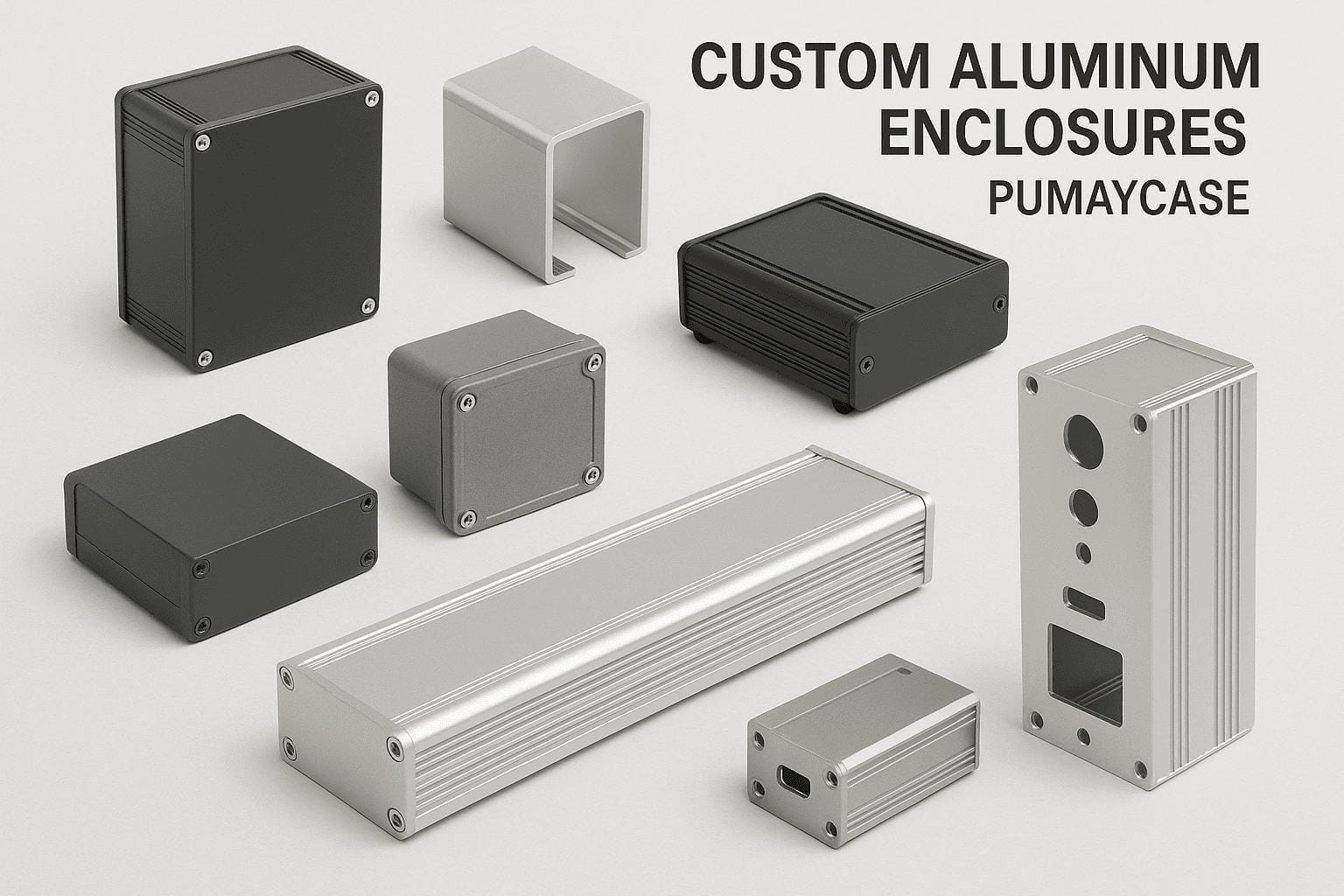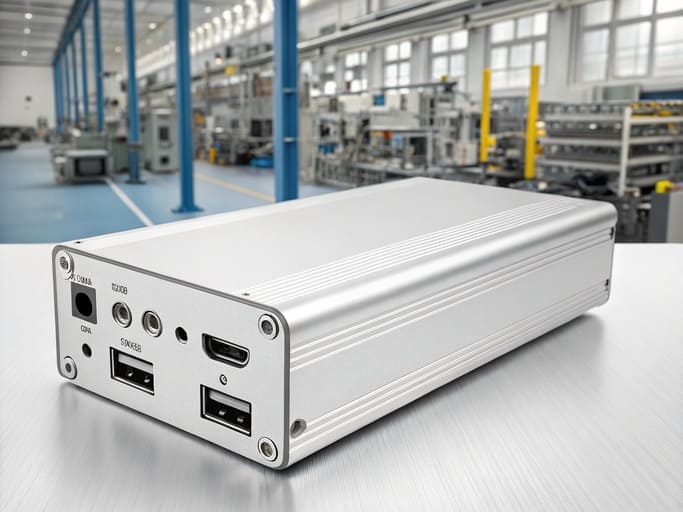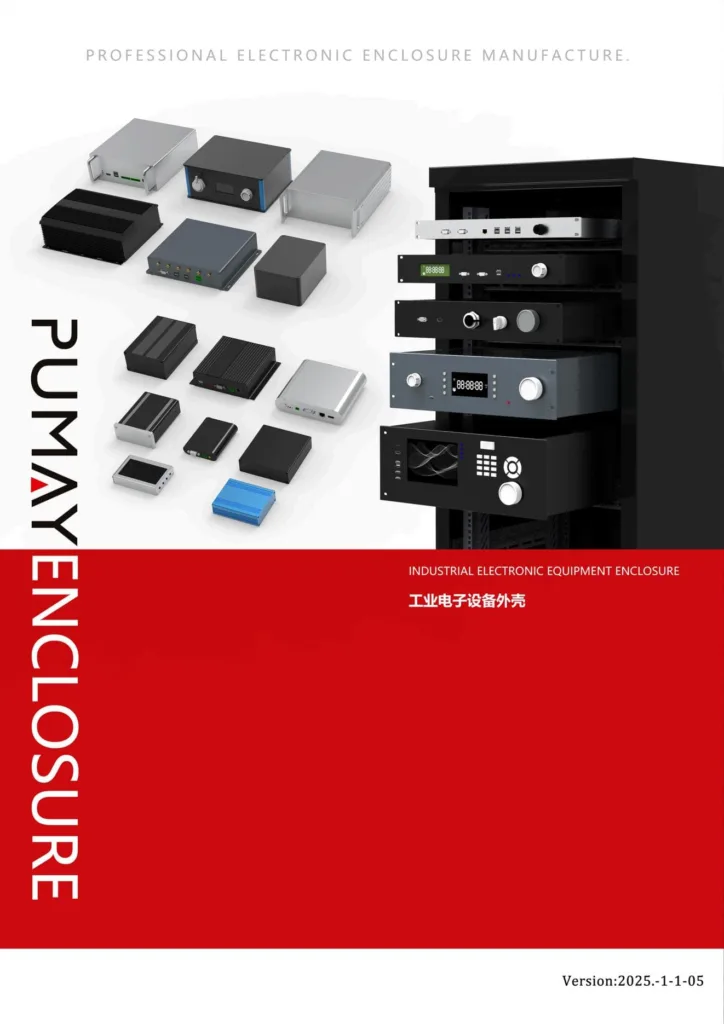Industrial equipment faces harsh conditions. A weak enclosure means a failed product and lost revenue. Aluminum provides the necessary strength and reliability to protect your investment.
The demand is driven by aluminum's unique ability to provide robust physical protection, superior thermal management[^1] for high-power electronics[^2], and effective EMC shielding[^3]. Its light weight and capacity for rapid customization also meet the market's need for speed and efficiency in production.
 "North American Industrial Aluminum Enclosures"
"North American Industrial Aluminum Enclosures"
I have seen this shift firsthand over the last decade. Engineers and product managers in North America are moving away from generic solutions. They demand enclosures that actively improve their product's performance and reliability. It's not just about a box anymore; it's about a competitive advantage. The reasons for this trend are clear when you look at the challenges they face every day. Let's explore the key drivers that I see in project after project.
Why is durability and protection so critical in modern industrial settings?
Factory floors are brutal on electronics. Vibration, impacts, and moisture can cause constant failures. Rugged aluminum enclosures are the first and most important line of defense.
Durability is critical because equipment failure in industrial settings leads to costly downtime and safety risks. Aluminum offers a superior strength-to-weight ratio[^4] and natural corrosion resistance[^5], protecting sensitive electronics from physical shock and environmental hazards[^6] like dust and water, ensuring operational continuity.
 "Durable Industrial Aluminum Enclosure"
"Durable Industrial Aluminum Enclosure"
Industrial environments are unforgiving. I'm talking about vibrations from heavy machinery, accidental impacts, and constant exposure to dust and chemicals. I once worked with a client developing a control unit for an automated guided vehicle (AGV). Their initial plastic prototype cracked under the constant vibration. We switched to an extruded aluminum design. The inherent rigidity of the extruded profile handled the stress perfectly, and by integrating the sealing gasket into a custom groove, we easily achieved an IP67 rating[^7]. This is a common story. Choosing the right material is a trade-off, but for most industrial applications, aluminum hits the sweet spot. It provides the protection you need without the excessive weight of steel, which is critical for mobile or wall-mounted equipment where every gram matters. Our integrated manufacturing[^8] process ensures that seal integrity is perfect every time, avoiding the tolerance mismatch common when sourcing parts from different suppliers.
| Material | Strength | Weight | Corrosion Resistance |
|---|---|---|---|
| Aluminum | High | Low | Excellent |
| Steel | Very High | High | Poor (requires coating) |
| Plastic | Low | Very Low | Excellent |
How does thermal performance drive the choice for aluminum enclosures?
Electronics are getting smaller and more powerful, which means they get hotter. Trapped heat is a silent killer of components. Aluminum enclosures offer a built-in solution.
Thermal performance is a key driver because aluminum's high thermal conductivity allows the enclosure to function as a large, passive heatsink. This dissipates heat without fans, which are prone to failure from dust and moisture in industrial settings, thus increasing the product's overall reliability.
 "Aluminum Enclosure Thermal Performance"
"Aluminum Enclosure Thermal Performance"
The trend towards miniaturization is everywhere, even in industrial automation. Product engineers like Jeff are tasked with packing more processing power into smaller spaces. This creates a serious thermal challenge. In a clean office, you can add a fan. On a dusty factory floor, a fan is a liability—it clogs up and fails, causing the system to overheat. This is why passive cooling[^9] is so important. Aluminum is about 200 times more thermally conductive than common plastics and 4 times more than steel. This means it can pull heat away from a processor and spread it across its entire surface. I often advise clients to design enclosures with integrated heatsink fins. We can create these complex profiles through extrusion, turning the case itself into a silent, ultra-reliable cooling system. It’s an elegant solution that solves a major reliability headache for industrial electronics and removes a common point of failure.
| Material | Thermal Conductivity (W/mK) |
|---|---|
| Aluminum (6063) | ~200 |
| Carbon Steel | ~50 |
| ABS Plastic | ~0.2 |
Why is customization and speed essential for North American manufacturers?
The industrial market moves fast, demanding tailored solutions. Waiting months for a custom enclosure from overseas means missing your window. You need a partner who can move at your speed.
Speed and customization are essential because they allow manufacturers to quickly iterate designs and serve niche markets. The ability to get small-to-medium batches of enclosures with specific cutouts, branding, and finishes quickly is a major competitive advantage, reducing time-to-market.
 "Rapid Customization of Aluminum Enclosures"
"Rapid Customization of Aluminum Enclosures"
The days of one-size-fits-all are over. The North American market thrives on innovation, which means high-mix, low-volume production runs. A company might need 200 units of one version and 300 of another with a slightly different port layout. Sourcing this from multiple vendors is a nightmare of mismatched tolerances and communication delays. I built PUMAYCASE to solve this exact problem. By having CNC machining, anodizing, and silk-screening under one roof, we control the entire process. A product engineer sends us a file, and we can deliver a finished, branded enclosure ready for assembly. This is how we cut development time by up to 40%. A startup client recently needed a branded prototype for a major trade show. With a traditional multi-vendor approach, they would have missed their deadline. We delivered their finished cases in three weeks, allowing them to secure crucial early orders. That is the power of integrated manufacturing[^8].
| Process Step | Multi-Vendor Approach | Integrated Approach |
|---|---|---|
| Extrusion | Vendor A (2-3 weeks) | In-house (1-2 weeks) |
| CNC Machining | Shipping + Vendor B (2-3 weeks) | In-house (1 week) |
| Anodizing | Shipping + Vendor C (1-2 weeks) | In-house (3-5 days) |
| Total Time | 5-8 weeks | 2-4 weeks |
Conclusion
Demand for aluminum enclosures is high because they solve key industrial challenges. They provide robust protection, superior cooling, and the fast customization needed to compete in today's market.
---
[^1]: Learn about the importance of thermal management in electronics and how it affects reliability.
[^2]: Explore the unique challenges faced by high-power electronics and how to address them.
[^3]: Discover the significance of EMC shielding in protecting sensitive electronics from interference.
[^4]: Understand why the strength-to-weight ratio is crucial for selecting materials in industrial applications.
[^5]: Find out how corrosion resistance can prolong the life of equipment in harsh environments.
[^6]: Learn about the various environmental challenges that industrial electronics must withstand.
[^7]: Find out how an IP67 rating ensures protection against dust and water ingress.
[^8]: Discover how integrated manufacturing can streamline processes and improve efficiency.
[^9]: Investigate the benefits of passive cooling solutions for enhancing electronic reliability.



